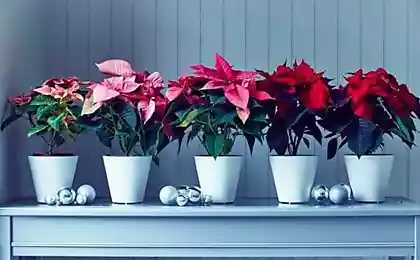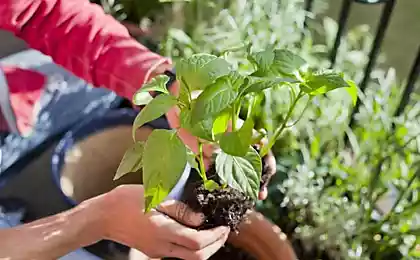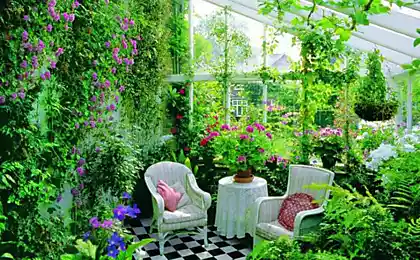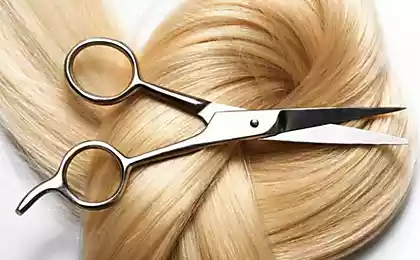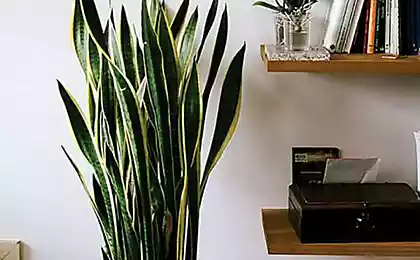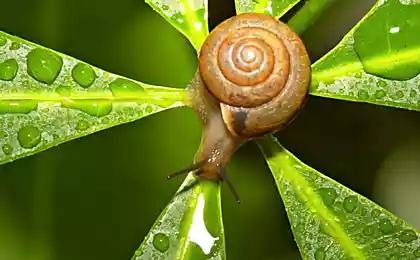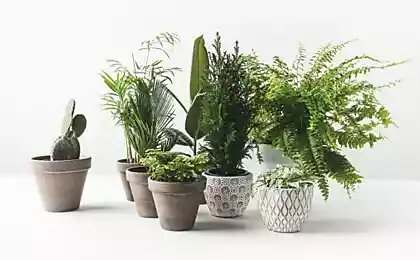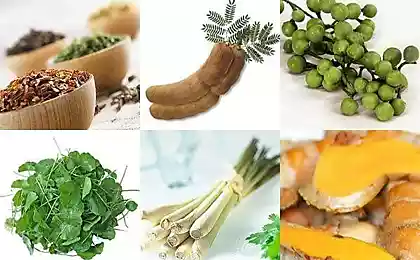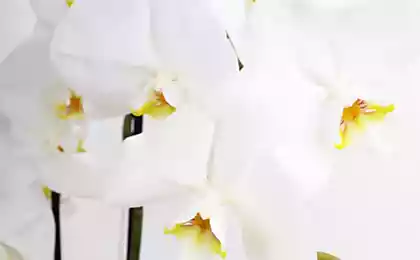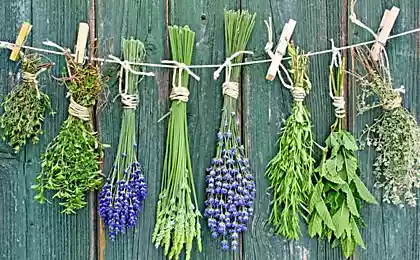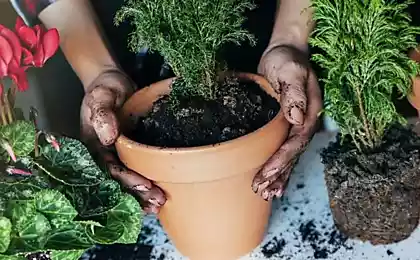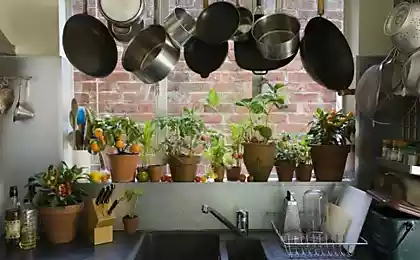517
Cosmetic and medical treatments for houseplants

The flowers not feeling well, but don't immediately run for the chemistry in the garden shop. All components of these recipes you will find at home.
1. Get rid of aphids by using detergent.
Aphids like to feed on fresh young shoots. But it is unlikely she will like a few drops of detergent and a wet rag. One more move and aphids away.
2. Down with illegal immigrants.
If the land was infested with tiny insects which swarm in the flower pots, stick in the ground three matches heads down, and pests quickly leave the chosen place.
3. Vinegar essence disinfects.
Fungus, moss and spots of lime over time, make the pot unattractive and are the breeding ground for diseases. Put on a pot of vinegar and clean it with a brush, it will remove the dirt and kill the disease.
4. Liquid soap and alcohol will kill the scale insects.
This pest resistant in nature: insects hiding under the shield, and therefore they are hard to get. It is best to scrape off one by one with a stick. You can try a mild soap solution and alcohol: 20 grams of soap and a little alcohol to dissolve in a liter of water, then liberally spray this mixture on lower side of leaves. If the scale does not run, soak in a solution of a q-tip several times and wipe the leaves along the veins.
5. The exiled spider mites high humidity. These babies are barely visible, but in a warm and dry air of heated premises, their number increases, and becomes visible to their thin web. Three simple tools will help to get rid of these insects a soft but effective way. You will need a spray bottle, a plastic bag and water. Liberally spray plants spray with a fine nozzle, together with the pots put them in a large enough package and hermetically close it. High humidity will stop the reproduction of mites and eventually, they will die.
6. Onion decoction strengthen the immune system.
In order to fight stress with flower, put onion peel in boiling water, let boil and leave the broth to infuse overnight. Spray plants with this infusion.
7. Lime stains will remove the peat.
If your plants had white spots on the leaves, that's no reason to panic, because maybe it is only on deposits too hard of water for irrigation. To soften water you can use peat. Simply fill a linen bag with peat and put it down for the night in a ten-litre bucket of water. Peat neutralizes the lime, will soften the water and make it more pleasant for plants.
8. The water for irrigation. The water left from cooking potatoes contains starch that promotes the growth. However, plants can be watered it is only in the case if the water is not salted! The supernatant mineral water (that is water) acts as a fertilizer.
9. Coffee grounds is a great Ripper.
Do not dispose of coffee grounds. A handful of black extract — exactly what you need the land for flowers. The trick is that the hardened earth will become again loose the fine powder coffee. Another positive impact is that the coffee grounds at the same time lowers the pH. It is an added bonus for plants that prefer acidic soil, for example, camellias or azaleas.
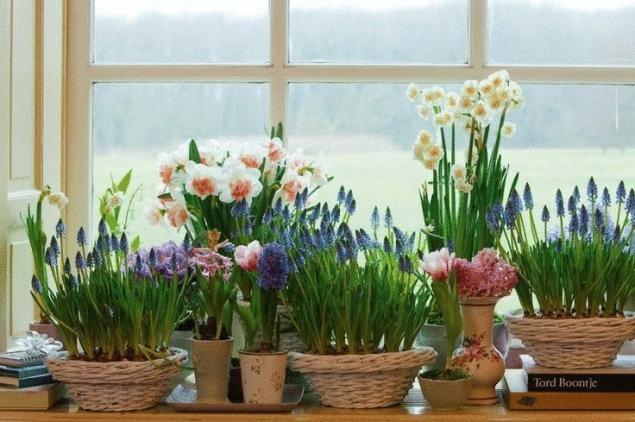
photo: green-24.de
10. Beauty treatments.
For plants are very important in appearance, so the sheets should be regularly cleaned of dust. Delicate leaves, such as African violets, with a soft clean brush. Leathery leaves are more durable, can be washed. These techniques will help your plants, and fertilizers and proper care will ensure a flawless look.
Transplanting and handling plants
Let's see — whether among your houseplants, those that can't get enough: no matter how much water, the earth dries quickly? This is because the roots have grown and quickly absorb moisture. The other — the soil is moist, but kind of disappointing. It seems that the plant is flooded and its roots rot. It happens the other way: the flower is green and healthy, and to grow somehow, not want. Most likely, the land in which it sits, is too condensed and there was little oxygen necessary for the roots for normal development.
The problem in all these cases are different, but one solution: a speedy transplant. Now is the time. Bright and warm sun will allow the plant to recover quickly after several traumatic surgeries.
House plants over the summer has grown a lot, and many of them are as if torn out of the pot to freedom. The substrate has already been deteriorated and it is time to start fall "migration".
There are two ways: transplanting and handling.
If the roots of the plants in order, then he needs to be handling — that is, simply moving to a pot larger volume with the preservation of earthen coma. Transplantation without preservation of earthen coma performed in the event, if the plant is flooded and its roots rot. In this case the ground shake gently, remove the damaged roots, slices sprinkled with powdered charcoal. Plant in the new pot, ensuring good drainage. The old earth is replaced with new breathable ground.
Transplant rules:
Before transplanting the plants should be well shed.
Capacity needs to be 3-4 cm wider than the previous one. If the container or pot is much higher than the former, nothing to worry about, the extra inches can be filled with drainage.
For growing plants it is possible to take capacity twice as wide as the previous one, but in this case it is necessary to be especially careful with watering.
You cannot close expanded clay drainage hole. To avoid this, a hole, put a potsherd, shell or stone with a rough surface.
The drainage layer can be from 3 cm to half the height of the pot. For plants with surface root system (arrowroot, Nephrolepis, aspidistra, epipremnum) and succulents it needs to be more. For plants with well developed roots directed into the pot (most of the ficus, palms, dracaena, asparagus), and 3 see enough Plants can be planted in high pots, but the layer of earth under the lump should not be significant, the remaining height of the container is filled with drainage. To tall and narrow container was stable, as the drainage put pebbles or gravel.
On top of drainage fill layer of soil, then carefully place on it a grafted plant so that the root collar was located 2-3 cm below the rim of the pot.
Roots covered with earth, compacting it with your hands, leaving to the upper edge of the pot 2-3 cm
After the transplant, the plant is abundantly watered, if necessary — to fill up the sunken earth.
After the transplant:
The plant is put in a bright place but not under direct sunlight and protect from draughts.
To feed him to start not earlier than 3-4 weeks after transplantation, but only if the plant is well settled.
Try to avoid errors during transplantation:
Not zaglubljaja at the root collar of woody plants.
Do not put in too large a pot without drainage, the plant will grow poorly. In addition, it can lead to the Bay of plants and rotting of roots.
Do not fertilize just transplanted the plant into the fertilizer can burn the roots occur and, as a result, the plant will die. In addition, the finished substrates, usually contain fertilizers, which act gradually.
source: talumala.com
Source: /users/1077




